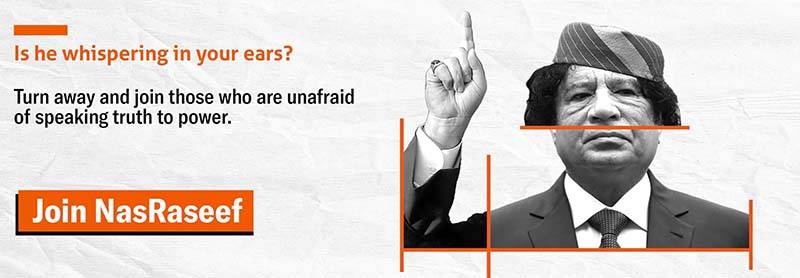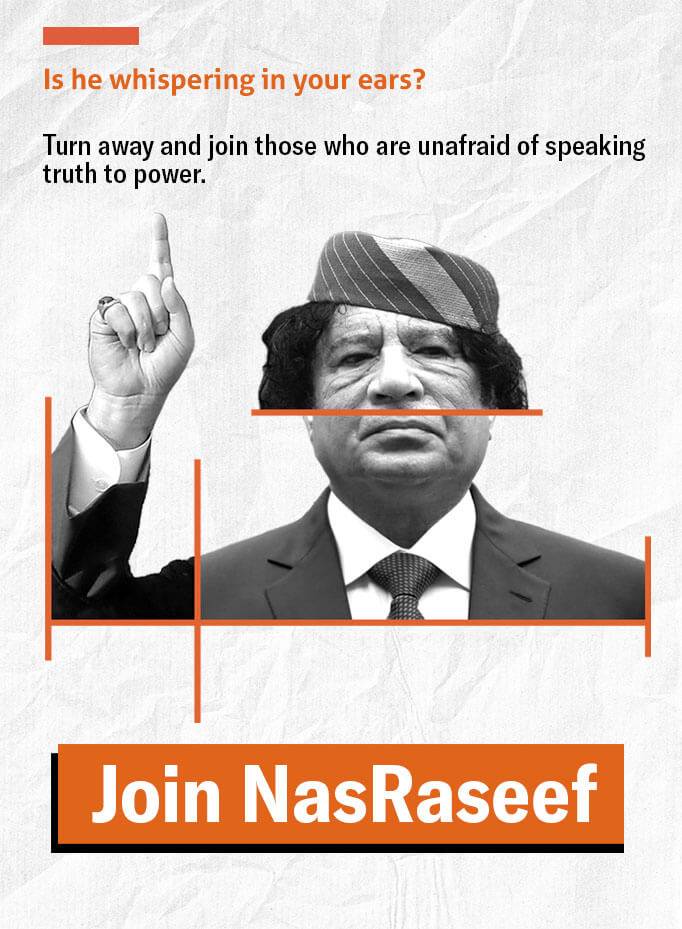It has been said that ignorance is the fuel of animosity; and perhaps one glance at the modern Middle East confirms the veracity of this statement. Amidst sectarian wars and tensions, Arab societies have been caught up in a perpetual cycle of polarization based on misunderstanding. Nowhere is this more evident than the historical rift between Sunnis and Shi’ites, based on the misconceptions surrounding a number of key Shi’ite tenets among the majority of Sunnis. These misconceptions have exacerbated existing tensions for decades. [h2]
- The Book of Fatima
[/h2]
There has been much discussion among Sunnis of what is known as the Book of Fatima, or Mushaf Fatima. The first thing that crosses the mind is that this is an altogether different version of the Quran that Shi’ites believe in. In reality, there is a major difference between the Quran and the Book of Fatima, but the true source of contention is the use of the word Mushaf to describe it. Mushaf, in this case, refers to a book, rather than the Quran as is commonly believed, as stated in Lisan Al-Arab by Ibn al-Manzur. Al-Sayed Kamal al-Haidari explains that the Book of Fatima was the result of the Archangel Gabriel (Jibril) descending to console Fatima upon the death of her father, the Prophet. His descent lasted for several days, and each night he gave her some news about her children and their future. Ali bin Abi Talib overheard this and recorded it in writing, finally collecting the texts into what would become the Book of Fatima. Shi’ite imams continued to inherit this book until it landed in the hands of the 12th imam, whom Shi’ites believe will emerge with the book at the end of days. [h2]
- Ḥusseiniyāt
[/h2]
Many Sunnis believe that Ḥusseiniyāt are Shi’ite mosques governed by the imamate, where prayers are held. However, in reality, they are simply gathering places for Shi’ites, and differ from their mosques. They can more accurately be described as social and cultural gatherings. Iraqi sociologist Ibrahim Alhidari states in his book The Tragedy of Karbala that: “In the second half of the 19th century, the Shi’ites of Iraq began building Ḥusseiniyāt as religious cultural institutions to hold religious rituals,” in particular commemorating the death of Al-Hussein, thus conferring on the institutions his name as a symbol. Oftentimes, cultural seminars are held there, as well as public meetings to discuss issues of common interest. Wakes are also held there, and they are usually erected near a mosque, which can perhaps explain the confusion over their purpose among outsiders to the Shi’ite community. [h2]
- Husseini Soil
[/h2]
Many Sunnis do not understand the way Shi’ites pray, in particular their prostration on a small piece of earth. Sunnis generally interpret this to be a manifestation of paganism that carried over into contemporary times. However, in actuality, Shi’ites believe that Muslim contemporaries of the Prophet Muhammad prostrated on dirt or soil during prayer, and any barrier between their foreheads and the dirt was forbidden. Following the death of Al-Hussein (the grandson of the Prophet Muhammad and the most revered imam in the Shi’ite doctrine) in Karbala in 61 AH, Shi’ites began collecting pieces of dirt from Karbala into dried up pieces. They became accustomed to praying on them, as they are considered “pure dirt with great significance, where the noblest act of sacrifice was committed,” according to Sheikh Ahmed al-Wa'ily. Despite the sacredness of this soil among Imami Shi’ites, proselytizing on it is not a fundamental requirement of the faith, and any soil can be prayed upon, according to scholar Abdel Hussein al-Amini. [h2]
- The Third Shahādah
[/h2]
Many Sunnis are puzzled by the Shi'ite call to prayer, in which they repeat the phrase “I testify that Ali is the vicegerent of Allah”. Despite the prevalence of this phrase in various Shi’ite sources, they do not necessarily count it as one of the obligations of the adhān or call to prayer. Ayatollah Sistani, the foremost reference of the Shi’ite doctrine, states in his book Manhāj al-Sāliḥīn that the third shahādah (declaration of faith) is a continuation of the second, and is recommended, even though it is not officially part of the adhān. [h2]
- Shi’ite Shrines
[/h2]
During the last Hajj season, various media outlets circulated news that Iran had decided to direct its citizens wishing to perform pilgrimage toward Shi’ite shrines Iraq, instead of the Two Holy Mosques in Hijaz. Despite official denials from Tehran, the issue sparked censure among various Sunni circles. This was largely due to confusion surrounding the term marqad, used to describe the shrines, as well as disputation over the holiness of these sites. Shi’ite cleric Mohamed Sadeq al-Karbasi explained that the term marqad derives from the term al-raqad, referring to the resting place of the dead. Thus, the term can be used to refer to any grave, be it Sunni or Shi’ite. With regards to the holiness of the sites, this is attributed to their being the graves of imams whom Imami Shi’ites believed to be holy, and who were believed to have mediated between God and the people. [h2]
- Marriage for Pleasure
[/h2]
One of the most prominent points of contention between the Sunni and Jaafari Shi’ite doctrines is the former’s condemnation of the concept of marriage for pleasure. Meanwhile, such marriages are permissible in Shi’ism, and are considered entirely legitimate. The majority of Sunnis are unaware the both Sunni and Shi’ite Islamic references concede that such unions were permissible during the earlier ages of Islam, and were practiced by many of the ṣaḥābah (the companions of the Prophet Muhammad). The difference, according to the late Sheikh Ahmed al-Wa’ily, is that “while Sunnis affirm that the decree for marriages of pleasure was abolished, and that it was forbidden following the Battle of Khyber, Shi’ites do not find sufficient evidence of the abolition, and thus marriages of pleasure remained halal (permissible) for them.” Thus, the confusion between both sides is simply an issue of jurisprudential interpretation. [h2]
- The Ḥawza
[/h2]
According to Sunni custom, the central institutions for religious studies are in Mecca, Al-Azhar, Kairouan, Al-Zaytuna, and various other schools and institutions around the Islamic world. Such schools have not been known as ḥawzāt, as they are known among Shi’ites. In Shi’ite custom, the ḥawza is a school of jurisprudence (fiqh) in which Shi’ite Shariah studies are undertaken. In contemporary times, there are various Shi’ite ḥawzāt in Arab and Islamic countries in which Shi’ites reside. Probably the most notable of these are the ones in the cities of Qum, Iran and Najaf, Iraq. Despite the geographical distance between the two schools, and the fact that they do not fall under the administration or supervision of a single body, the teaching curriculums at both institutions are very similar. The educational curriculum passes through various consecutive stages, where each stage qualifies for the next, much like the educational systems in traditional Sunni institutes and schools. [h2]
- Eid al-Ghadir
[/h2]
Sunnis celebrate two religious holidays; Eid al-Fitr and Eid al-Adha. They do not acknowledge any other holidays, and so the term Eid al-Ghadir is often met by perplexity. Eid al-Ghadir is celebrated on the 18th of Dhu al-Hijja every year, based on the belief that upon Prophet Muhammad’s return from the Farewell Hajj (his last and only Hajj pilgrimage), he ordered Muslims to stop at a place known as Ghadir Khumm, where he gave a number of commandments to the Muslims. Among those were the commandment that “to whomsoever I am leader, Ali is also their leader.” Shi’ites believe that this saying marked the declaration of Ali bin Abi Talib as the successor in the Imamate, becoming the Caliph over all Muslims. Thus, the day is marked as a holiday that Shi’ites celebrate every year. 

Raseef22 is a not for profit entity. Our focus is on quality journalism. Every contribution to the NasRaseef membership goes directly towards journalism production. We stand independent, not accepting corporate sponsorships, sponsored content or political funding.
Support our mission to keep Raseef22 available to all readers by clicking here!




Join the Conversation
جيسيكا ملو فالنتاين -
1 day agoجميل جدا أن تقدر كل المشاعر لأنها جميعا مهمة. شكرا على هذا المقال المشبع بالعواطف. احببت جدا خط...
Tayma Shrit -
3 days agoمدينتي التي فارقتها منذ أكثر من 10 سنين، مختلفة وغريبة جداً عمّا كانت سابقاً، للأسف.
Anonymous user -
3 days agoفوزي رياض الشاذلي: هل هناك موقع إلكتروني أو صحيفة أو مجلة في الدول العربية لا تتطرق فيها يوميا...
Anonymous user -
3 days agoاهم نتيجة للرد الايراني الذي أعلنه قبل ساعات قبل حدوثه ، والذي كان لاينوي فيه احداث أضرار...
Samah Al Jundi-Pfaff -
4 days agoأرسل لك بعضا من الألفة من مدينة ألمانية صغيرة... تابعي الكتابة ونشر الألفة
Samah Al Jundi-Pfaff -
4 days agoاللاذقية وأسرارها وقصصها .... هل من مزيد؟ بالانتظار